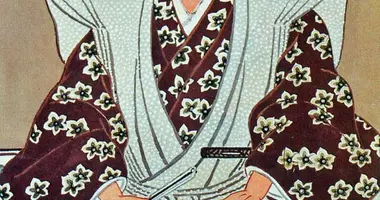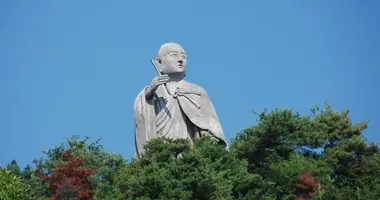Japanese History: An Overview
- Published on : 13/06/2024
- by : Japan Experience
- Youtube

Station Kawasaki, "The Rokugo Ferry" (Rokugo watashibune, 六郷渡舟)
Japan's history is a tapestry woven with threads of tradition, innovation, and resilience. From its earliest days as an island nation to its emergence as a global economic powerhouse, Japan has undergone remarkable transformations. This overview traces the key periods and events that have shaped Japan's unique cultural identity and its place on the world stage. We'll explore the rise and fall of imperial dynasties, the age of the samurai, periods of isolation and rapid modernization, and Japan's recovery and reinvention following World War II. Through it all, we'll see how Japan has managed to preserve its distinctive character while adapting to the changing tides of history.
Ancient Japan: From Prehistoric Times to the Nara Period
Japan's recorded history begins in the Kofun period (300-538 CE), named after the large burial mounds built for rulers. This era saw the emergence of a centralized state under the Yamato clan, who would later become Japan's imperial family. The introduction of Buddhism in the 6th century had a profound impact on Japanese culture and governance.
The Asuka period (538-710 CE) marked Japan's first major cultural flowering, with the adoption of Chinese writing, art, and political models. Prince Shōtoku's Seventeen-Article Constitution in 604 CE laid the foundations for a centralized government based on Confucian principles.
The Nara period (710-794 CE) saw the establishment of Japan's first permanent capital at Nara. This era is notable for the creation of Japan's first historical chronicles, the Kojiki and Nihon Shoki, which codified Japanese mythology and imperial lineage. The period ended with Emperor Kammu's decision to move the capital to Heian-kyō (modern-day Kyoto) in 794 CE.
Classical Japan: The Heian and Kamakura Periods
The Heian Period (794-1185 CE) is often considered the peak of classical Japanese culture. This era saw the development of a distinctly Japanese writing system (kana) and the flourishing of literature, including Murasaki Shikibu's "The Tale of Genji", often cited as the world's first novel. The Fujiwara clan dominated court politics during this time, often acting as regents for young emperors.
As the imperial court's power waned, regional military leaders known as samurai began to rise in prominence. This shift culminated in the Kamakura Period (1185-1333 CE), which saw the establishment of Japan's first shogunate, or military government, under Minamoto Yoritomo. The Kamakura period is notable for the emergence of new forms of Buddhism, such as Zen and Pure Land, which would have a lasting impact on Japanese culture.
During this time, Japan also faced external threats, most notably the Mongol invasions of 1274 and 1281. Though these invasions were repelled (in part due to fortuitous typhoons known as kamikaze or "divine wind"), they severely strained the Kamakura shogunate's resources, contributing to its eventual downfall.
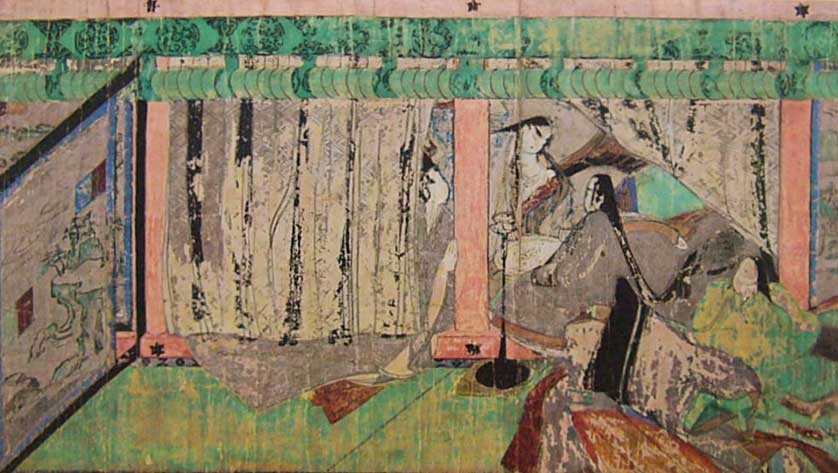
Scene from the Tale of Genji at the Tokugawa Art Museum, Nagoya
Feudal Japan: The Muromachi and Azuchi-Momoyama Periods
The Muromachi Period (1336-1573), also known as the Ashikaga period, saw a return to imperial rule, albeit with real power held by the Ashikaga shogunate. This era was marked by constant warfare between regional daimyō (feudal lords), culminating in the Ōnin War (1467-1477) which ushered in a century of conflict known as the Sengoku ("Warring States") period.
Despite the political turmoil, the Muromachi period saw significant cultural developments, including the refinement of Zen aesthetics in art and architecture, the development of the tea ceremony, and the emergence of Noh theater.
The Azuchi-Momoyama Period (1573-1603) was a brief but pivotal era that saw the gradual reunification of Japan under three powerful daimyō: Oda Nobunaga, Toyotomi Hideyoshi, and Tokugawa Ieyasu. This period is named after the opulent castles built by Nobunaga and Hideyoshi, which exemplified the era's bold and ostentatious aesthetic.
It was during this time that Japan had its first significant contact with European powers, particularly Portugal and Spain. The introduction of firearms and Christianity would have profound impacts on Japanese society and politics.
Early Modern Japan: The Edo Period
The Edo Period (1603-1868), also known as the Tokugawa period, was an era of relative peace and stability under the Tokugawa shogunate. The shogunate implemented a strict social hierarchy and pursued a policy of national seclusion known as sakoku, which severely limited contact with the outside world.
Despite this isolation, the Edo period saw significant economic and cultural developments. The merchant class grew in wealth and influence, leading to the flourishing of urban culture in cities like Edo (modern-day Tokyo), Osaka, and Kyoto. This era saw the rise of distinctly Japanese art forms such as ukiyo-e woodblock prints, kabuki theater, and haiku poetry.
Education also spread beyond the samurai class, leading to high literacy rates among the general population. However, by the 19th century, internal pressures and external threats began to undermine the Tokugawa system, setting the stage for dramatic changes.
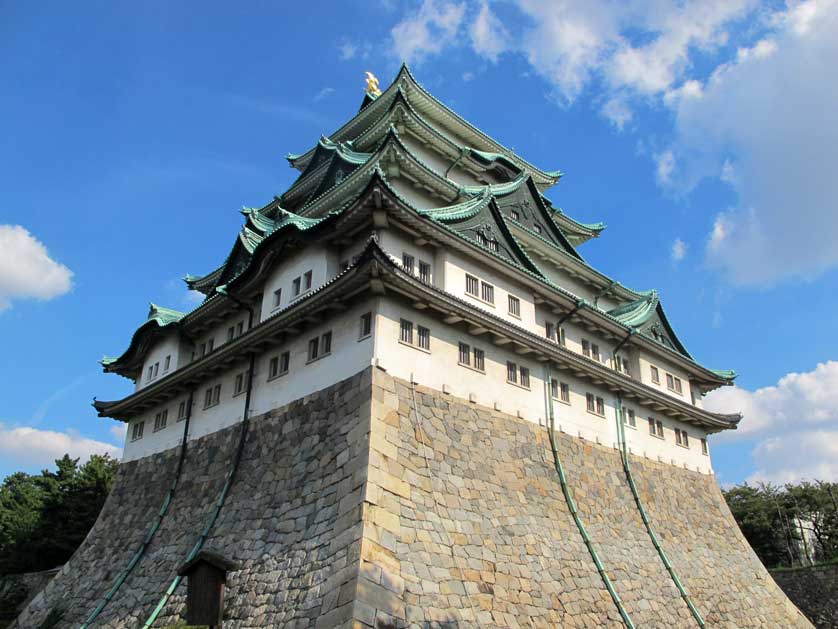
Many of Japan's great castles were built in the late 16th and early 17th century
Imperial Japan: The Meiji, Taisho, and Early Showa Periods
The Meiji Period (1868-1912) began with the Meiji Restoration, which saw the overthrow of the Tokugawa shogunate and the return of imperial rule under Emperor Meiji. This era was characterized by rapid modernization and Westernization as Japan sought to catch up with the industrial powers of the West.
The Meiji government implemented sweeping reforms, including the abolition of the feudal system, the creation of a modern military, and the establishment of a constitutional monarchy. Japan also began to pursue an expansionist foreign policy, defeating China in the First Sino-Japanese War (1894-1895) and Russia in the Russo-Japanese War (1904-1905).
The Taisho Period (1912-1926) saw a brief flowering of democracy and liberalism known as "Taisho Democracy." However, this was cut short by the rise of militarism and ultra-nationalism in the 1930s.
The early Showa Period (1926-1989) was marked by Japan's aggressive expansion into Asia, culminating in its entry into World War II. Japan's defeat in 1945 left the country devastated and under Allied occupation.
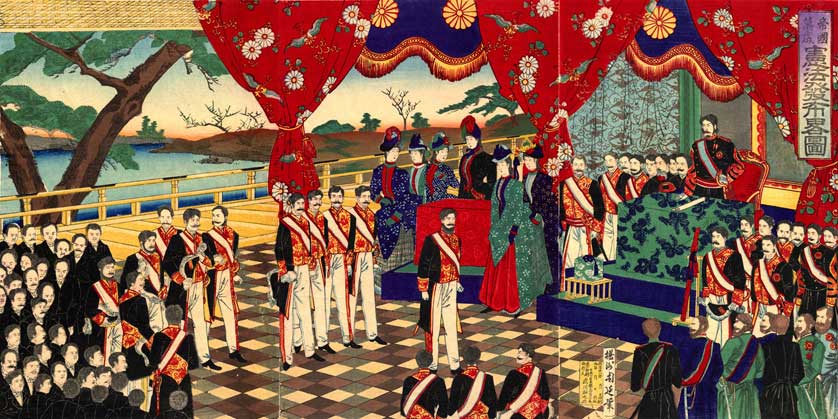
Meiji Constitution Promulgation 憲法発布略図
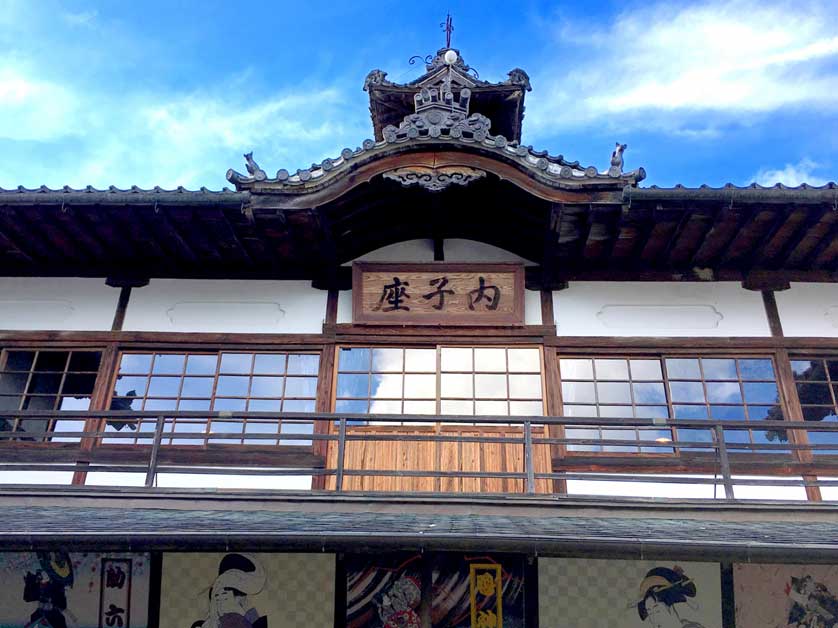
Uchiko-za (内子座) Theater - a Taisho Period kabuki Theater in Uchiko, Matsuyama, Shikoku
Post-War Japan: The Late Showa and Heisei Periods
The post-war period saw Japan's remarkable economic recovery, often referred to as the "Japanese Economic Miracle." Under the guidance of the United States, Japan implemented democratic reforms and focused on rebuilding its economy. By the 1980s, Japan had become the world's second-largest economy.
However, the bursting of the economic bubble in the early 1990s led to a prolonged period of economic stagnation known as the "Lost Decade." Despite these challenges, Japan remains a major economic power and cultural influencer on the global stage.
The Heisei Period (1989-2019) saw Japan grappling with issues such as an aging population, economic restructuring, and changing social norms. It also witnessed several major disasters, including the Great Hanshin Earthquake of 1995 and the Tohoku Earthquake and Tsunami of 2011.
Contemporary Japan: The Reiwa Period and Beyond
The Reiwa Period, which began in 2019 with the ascension of Emperor Naruhito, sees Japan facing both new challenges and opportunities. The country continues to navigate issues such as demographic decline, economic revitalization, and its role in an increasingly complex geopolitical landscape.
Japan's technological prowess, cultural soft power, and commitment to innovation position it well for the future. As it has done throughout its history, Japan continues to balance tradition and modernity, seeking to forge a path that honors its unique heritage while adapting to the demands of a rapidly changing world.
From the ancient emperors to the modern era, Japan's history is a fascinating journey of resilience, adaptation, and cultural richness. As we look to the future, Japan's past provides valuable insights into how nations can navigate the complexities of the global stage while maintaining their distinctive identity.
Read more articles on Japanese history
